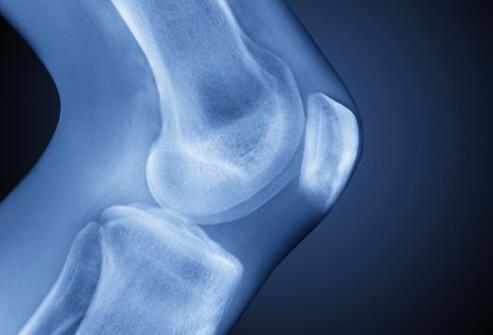When it comes to the general aches and pains we experience, there is often one common culprit: osteoarthritis.
While many know it by many different names (Uncle Arthur, degenerative joint disease, osteoarthrosis, degenerative osteoarthritis), over 51 million adults suffer from this diagnosis. Although the exact cause of osteoarthritis (OA) for most people is unknown, there is a high correlation between age, obesity, prior injuries, abnormal mechanical loading (weight bearing) and genetics.
What is osteoarthritis?
In simplest terms, osteoarthritis is damage to the cartilage that covers the surfaces of all the moving joints in the body.
Articular cartilage is avascular, meaning it has relatively no blood supply. Cartilage gets nutrients through mechanical pressure and loading. Imagine the cartilage as a sponge — when load is applied, it releases fluid, and when load is released, it absorbs fluid. This movement of fluid is what keeps the cartilage healthy.
The structure of cartilage allows it to withstand compressive loads and sheer forces, but damage is difficult to repair and usually leads to degenerative changes in the joint surface. These changes in joint surfaces can lead to pain and reduced ROM.
In turn, reduced loading leads to reduced nutrition and lubrication as well as atrophy and thinning of articular cartilage. Although OA can affect many joints in the body, one of the most common locations is in the knee.
Knee OA Injury prevention
As we just learned, maintaining mobility is key to maintaining cartilage health. Although the exact course of treatment may be different depending on your specific case, the following are general guidelines that can help to prevent and maintain knee health:
Avoid Overtraining – Make sure you vary your exercise routine. So get out there and run, go for a swim or take a bike ride. Then, incorporate weight training to strengthen various muscle groups progressively over time.
Stay Flexible – Make sure to stretch your quads, hamstrings and hip flexor muscles every day. Stretches should be held for 30 seconds followed by a short break … and repeated 3 times
Keep Your Legs Strong – Focus on quad, hamstring and gluteal strengthening. Also important for maintaining correct alignment and stability in the knees are the hip muscles.
Rehabilitation
If you have pain in your knee that isn’t going away, rehabilitation is a great step to take to improve your functionality. When coming in to physical therapy for help with knee or other arthritis, we will focus on restoring the following common causes of OA.
Manual Treatment– Upon evaluation, your therapist may find poor mobility in the joints and tight muscles. Clinical research supports the use of manual treatment techniques for reducing pain associated with OA.
Be Prepared to Re-educate Your Muscles – Clinical guidelines recommend exercises as the first line of defense for knee OA. Focus is on strong gluteal, quad, hamstring and gastroc muscles correcting movement patterns that may be contributing to pain. This will help ensure good knee alignment, leading to even load applied over the joint surface.
Be Balanced – Work on dynamic balance exercises to improve your proprioception and ability to stay upright.
Always think Proper Posture and Alignment – Maintaining your center of gravity over your feet will reduce undue stress and strain on your knee. Proper alignment is key to evenly distributing force through the entire joint to avoid excessive force damaging the cartilage
Be Strong through Your Core – Your core provides for better overall stability of the knee by providing a foundation for proper movement patterns.
Physical Therapy for OA
When weighing your treatment options for arthritis and knee pain, consider physical therapy. Physical therapy offers a wide variety of treatment options including manual therapy techniques, strengthening, stretching, and sustainable home exercise programs.
Stop in or call to learn more about how Alpine Physical Therapy can help you overcome your knee pain or other regions of osteoarthritis.
